Each year, New Yorkers produce more than 14 million tons of trash, which usually gets sent to landfills outside the city. Nearly 29 percent of that waste is suitable for composting, according to NYC.gov. In response to this waste management issue, an architectural firm has unveiled concept designs for a project aiming to divert compostable material away from landfills and onto a series of so-called "compost islands."
The folks over at PRESENT Architecture have come up with a preliminary plan to turn the city’s compostable waste into multi-purpose islands around each of the five boroughs. The project, called Green Loop, would have trucks haul the city’s organic waste not to landfills but to 10 multi-layered tipping and composting stations built just offshore. The space on top of these facilities would be used for elevated recreational parks.
In tune with the city’s Vision 2020 plan, an initiative to develop the city’s unused waterfronts, Green Loop offers a potential solution for curbing pollution, while also providing new public spaces.
For now, though, Green Loop is pretty far from becoming a reality. The next stage of the project consists of researching the public's interest and the project's feasibility in terms of government support and financing. The project's creators predict it will come with a hefty price tag, though exact numbers have yet to be budgeted.
“It won't be cheap, but if you consider that NYC is spending over $300 million every year to truck waste out of the city to landfills, it's possible that these facilities could start to make financial sense over time,” Evan Erlebacher and Andre Guimond, two of the project's leaders, told The Huffington Post in an email. “Especially if you begin to consider the cost to the environment from all of those truck miles. A project like this could take years to review and build, but construction of the network can be phased, so it's not all built at once.”
In case you were wondering, the project also tackles the issue of smell.
"This is an industrial processing facility, so there are multiple options for eliminating smell. Temperature, oxygen levels and composition of compost all affect odor, and these things can be monitored in an industrial facility. Composting can be done in a closed system to reduce smell, and bio-filters are also an effective way to reduce airborne odors. This kind of composting facility is very different from your average backyard compost heap," Erlebacher and Guimond said.
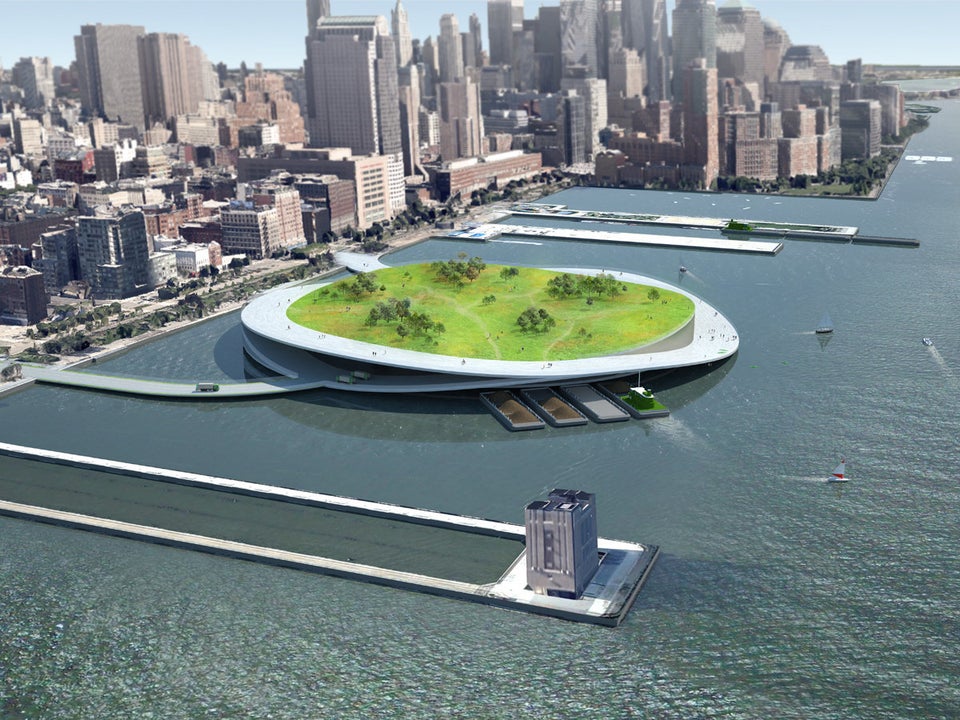
"As it stands, trucks around NYC deliver waste to 'tipping stations,' where refuse is dropped off before being trucked to landfills. This [Green Loop] proposal basically combines an organic waste tipping station with a compost facility and a park. Our compost parks are located along the waterfront to take advantage of existing transportation infrastructure for barges and rail," Erlebacher and Guimond said in an email to HuffPost.
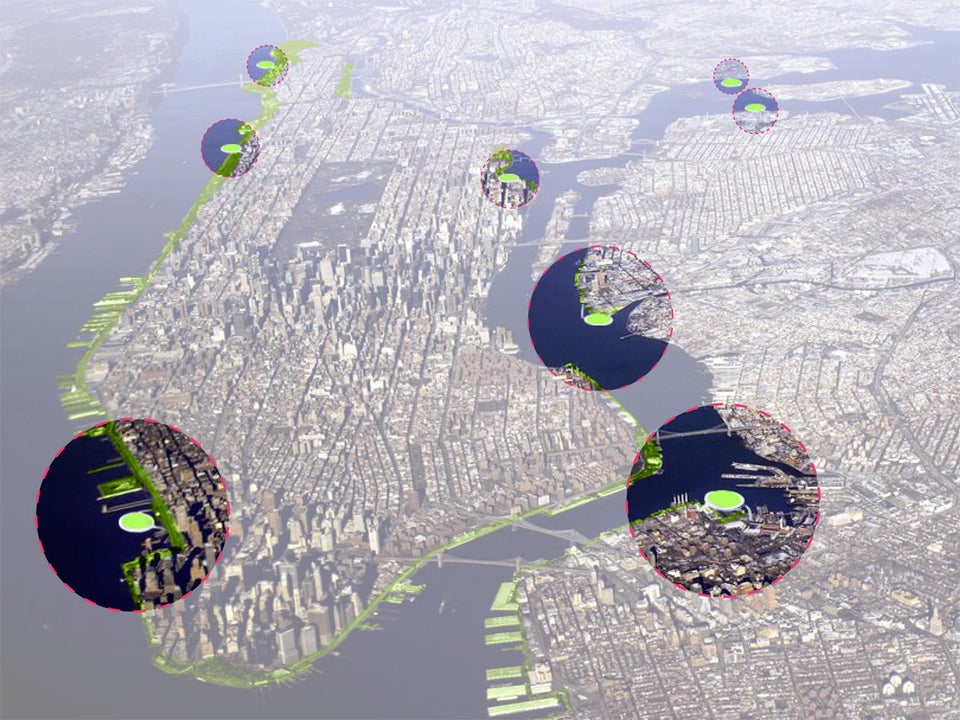
The Green Loop proposal envisions a network of 10 waterfront composting hubs in New York City, according to PRESENT Architecture's website.
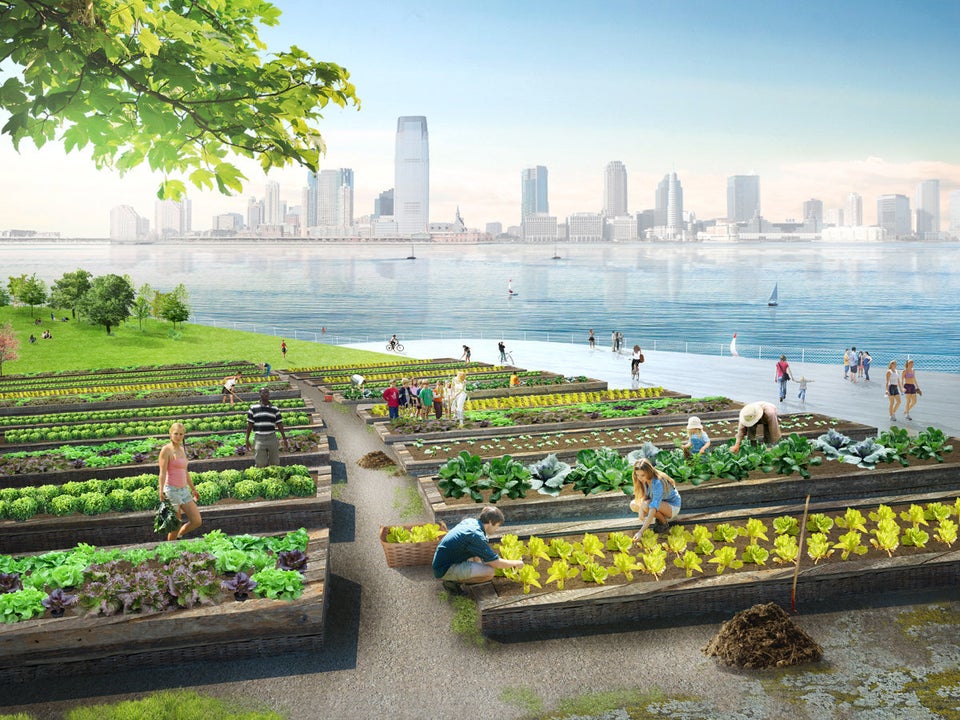
"NYC is already piloting a successful curbside collection program for organic waste, so it's likely that one day people will sort their organic waste just like they do their recycling. In the end, the success of composting will depend on whether New Yorkers embrace the idea or not. That, along with added technology, like trommel screens, to help sort out non-compostable items at the facility," Erlebacher and Guimond said in an email.
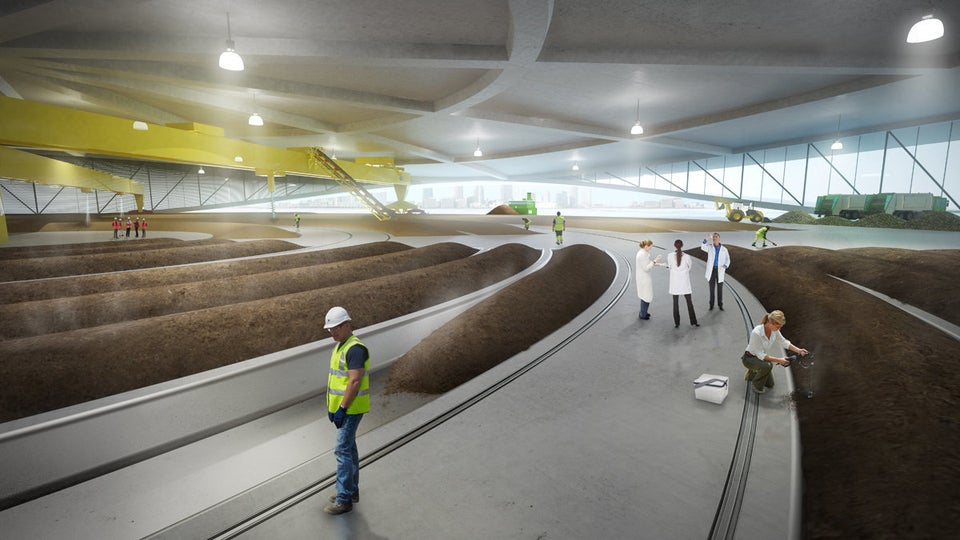
The project would also create jobs. "A large construction project like this would definitely keep people busy for a while. And then once the facilities are up and running, they would need people to manage and operate them," Erlebacher and Guimond said.

Each compost island facility would be multi-layered. A road connected to land would funnel trucks in and out of the island to unload the organic waste into the street-level compositing facility. The indoor composting process would produce nutrient-rich soil, with barges carrying away the final product to reduce traffic congestion.
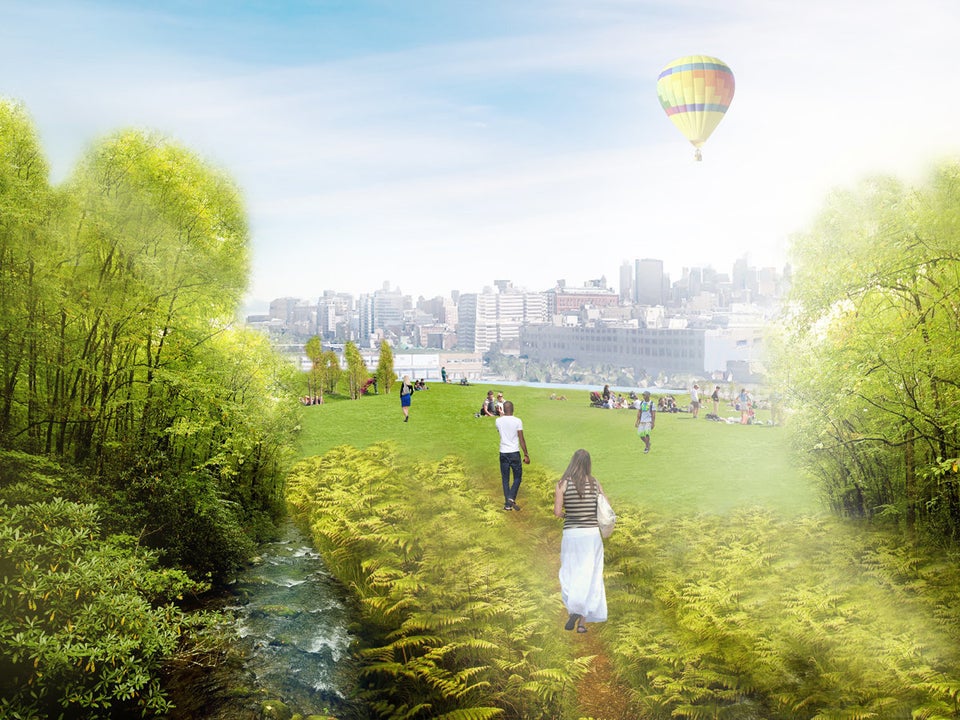
Recreational parks would be set up atop Green Loop's street-level composting facilities. These public spaces could be used for gardening, sports and even cross-country skiing in the winter. Across the 10 compost islands, the elevated open spaces would add more than 125 acres of park land to the city, according to PRESENT's website.
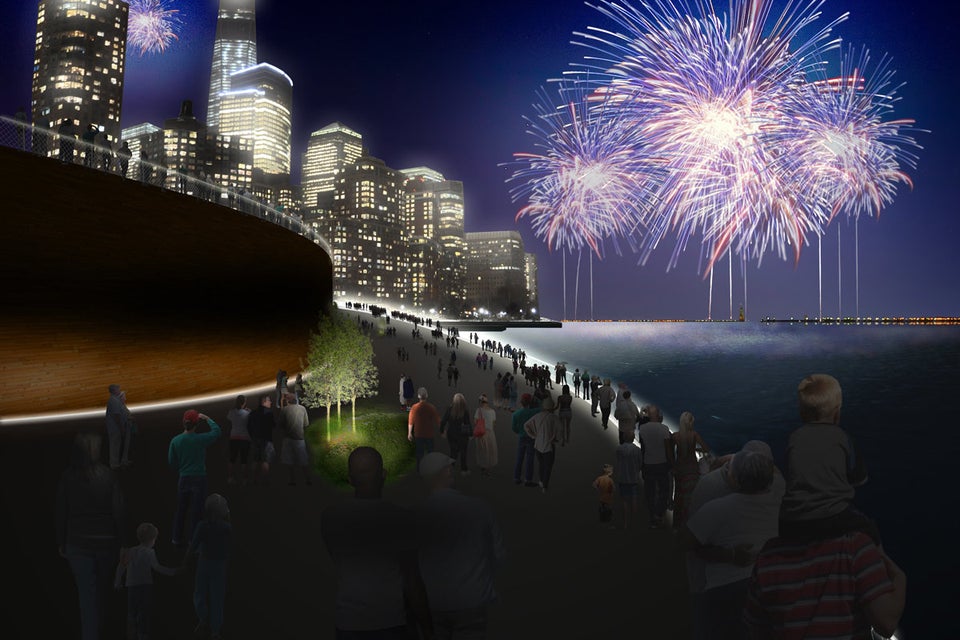
"Implementing a project like this would require a huge amount of commitment and support, not just on the financial front, but from grassroots community groups to local and state government agencies. To push the concept closer to reality, we want to gauge the public's response and research feasibility further. Urban waste management and climate change are complex and sensitive problems that require a thoughtful approach," Erlebacher and Guimond told HuffPost.